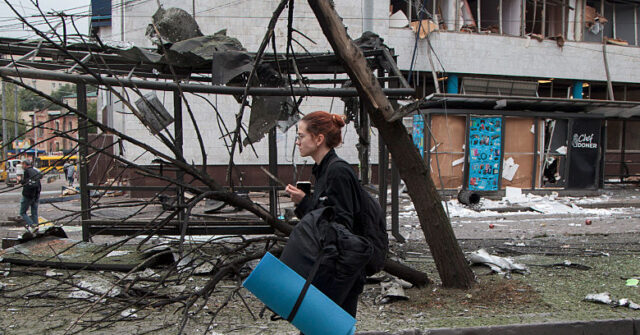In a significant escalation of hostilities, Russia unleashed a large-scale aerial attack on Kyiv, resulting in devastation and tragedy. The assault, which involved a relentless barrage of drones and missiles, claimed the lives of two individuals, including a 12-year-old, while injuring 15 others. As scenes of destruction unfolded, the attack underscored the urgent need for enhanced military support for Ukraine, drawing immediate concern from global leaders.
This aggressive move by Russia coincided
Did You Know
Octopuses have three hearts and blue blood.
?
AD
with high-stakes discussions among NATO allies scheduled to address military aid for Ukraine. As the U.K. and Germany prepare to chair a meeting to solidify support against the backdrop of Russian aggression, the implications of this assault reverberate through diplomatic circles. President Trump's controversial statement suggesting that European countries would pay for U.S. military supplies has further complicated negotiations, fueling tensions between allies and testing the resolve of NATO's unity.
In a striking response, Ukraine launched counterattacks that disrupted Moscow’s airports, showcasing a back-and-forth dynamic of escalating hostilities. Analysts warn that the growing capability of Russian drones poses an increasing threat, pushing the conflict to new heights. While the carnage continues, discussions about potential peace talks linger, as both sides navigate a perilous landscape of warfare and diplomacy amid shattered lives and uncertain futures.
Q&A (Auto-generated by AI)
What are the implications of NATO's response?
NATO's response to escalating attacks on Ukraine, including scrambling jets, signifies a heightened commitment to collective defense and deterrence against Russian aggression. It reflects NATO's readiness to protect member states and support Ukraine, potentially leading to increased military aid and a stronger unified stance against Russia. This response could escalate tensions further, prompting Russia to intensify its military actions, thereby complicating peace negotiations.
How has Trump's stance on Ukraine evolved?
Trump's stance on Ukraine has shifted from skepticism about military aid to advocating for European allies to shoulder more responsibility. His recent comments suggest a push for NATO members to provide weapons to Ukraine, indicating a more proactive approach to support Ukraine against Russian aggression. This change could influence future U.S. foreign policy and relations with NATO allies, particularly concerning defense spending and military collaboration.
What is the history of Ukraine-Russia relations?
Ukraine-Russia relations have been historically complex, marked by cultural ties and political tensions. The relationship deteriorated significantly after Russia's annexation of Crimea in 2014 and support for separatist movements in Eastern Ukraine. This conflict has led to ongoing military confrontations, economic sanctions, and a humanitarian crisis, shaping Ukraine's push for closer ties with the West and NATO as a counter to Russian influence.
What are the potential outcomes of the talks?
The high-level talks aim to address military support for Ukraine amid Russian aggression. Potential outcomes include increased military aid, strategic agreements among NATO allies, and possibly a framework for future peace negotiations. However, if talks fail, it could lead to escalated military actions from Russia and further destabilization in the region, complicating diplomatic efforts and prolonging the conflict.
How do drone attacks affect civilian safety?
Drone attacks significantly threaten civilian safety, as they often target urban areas, leading to casualties and infrastructure damage. In recent assaults on Kyiv, civilian casualties were reported, highlighting the indiscriminate nature of such attacks. The psychological impact on civilians can also be profound, as fear and anxiety increase amid ongoing violence, complicating humanitarian efforts and causing displacement.


















